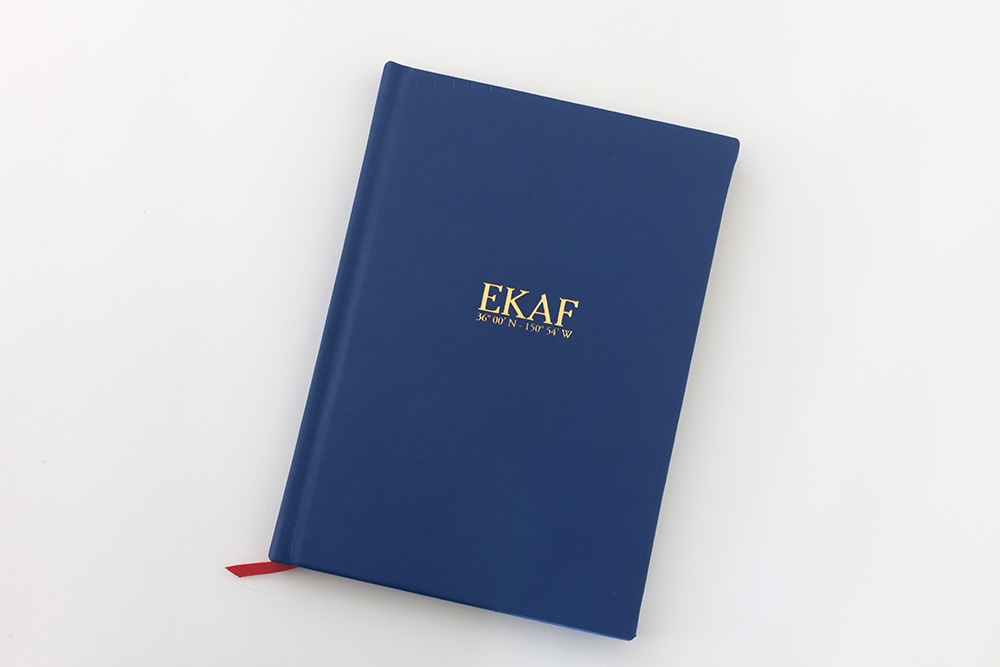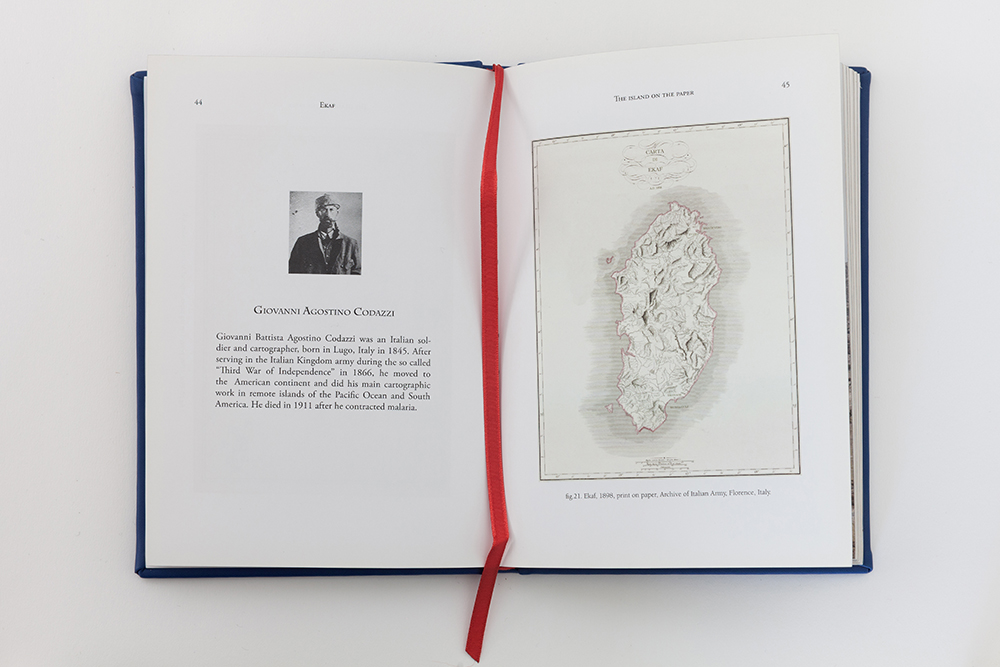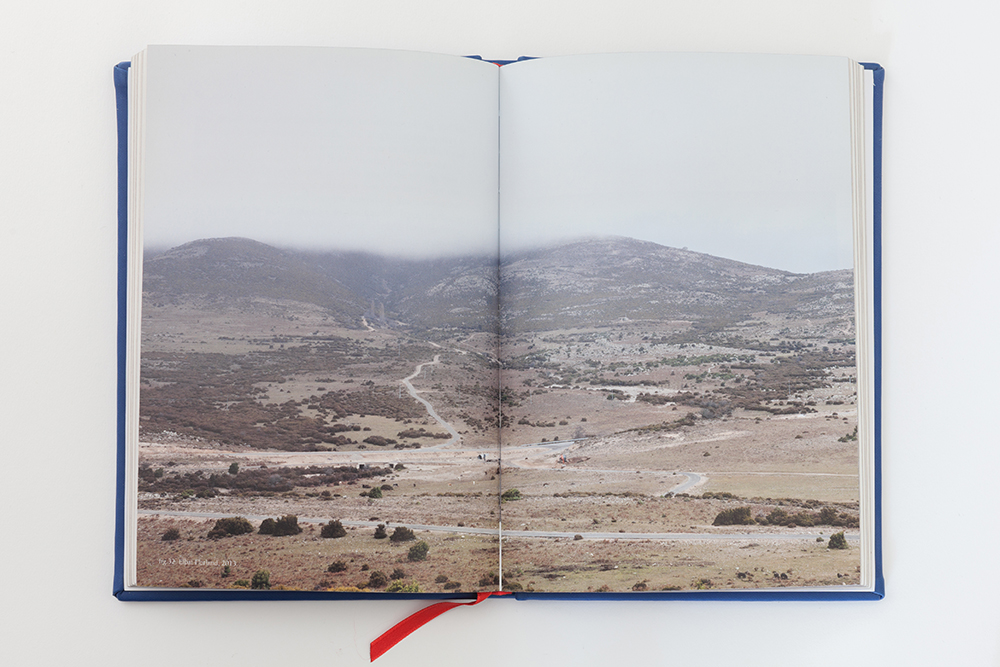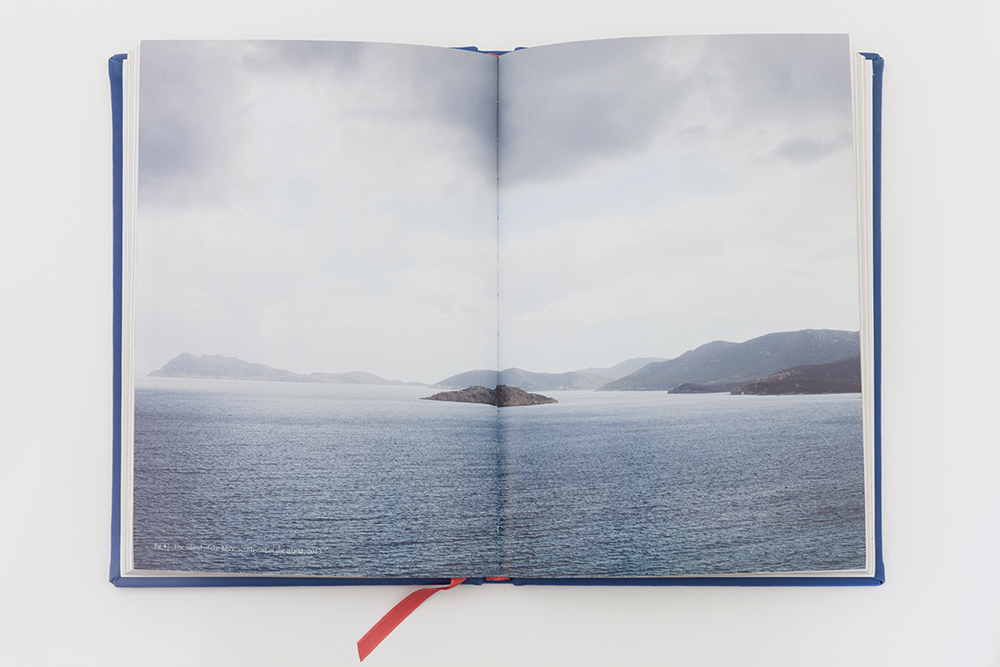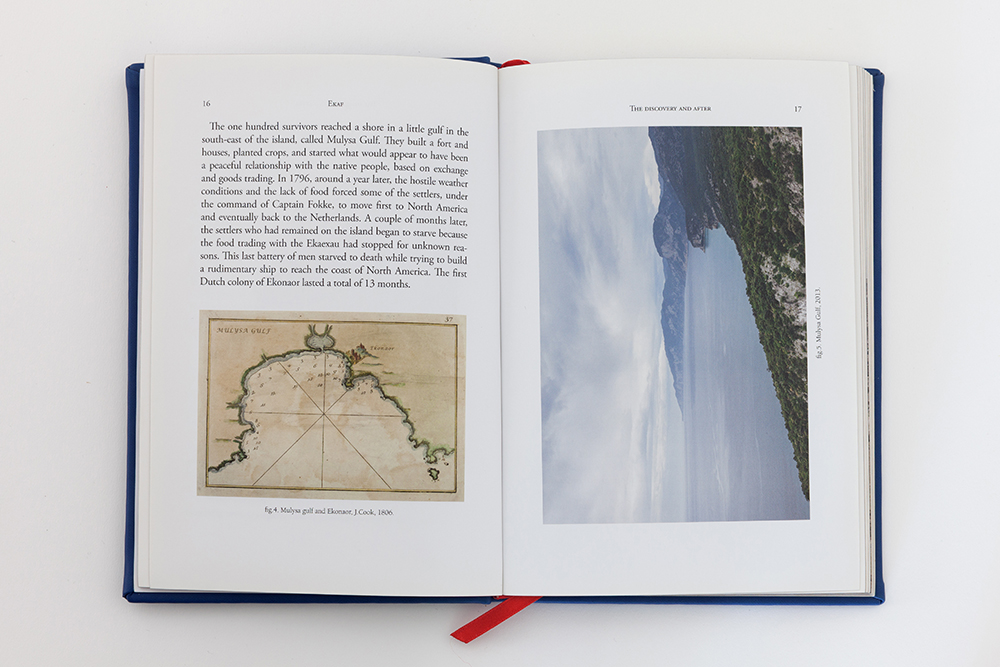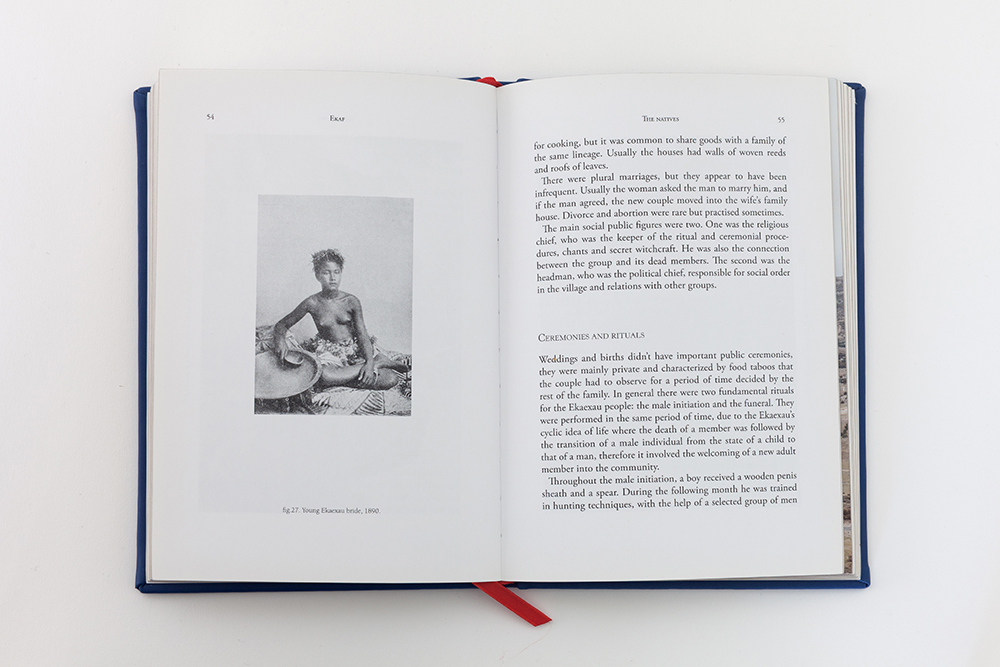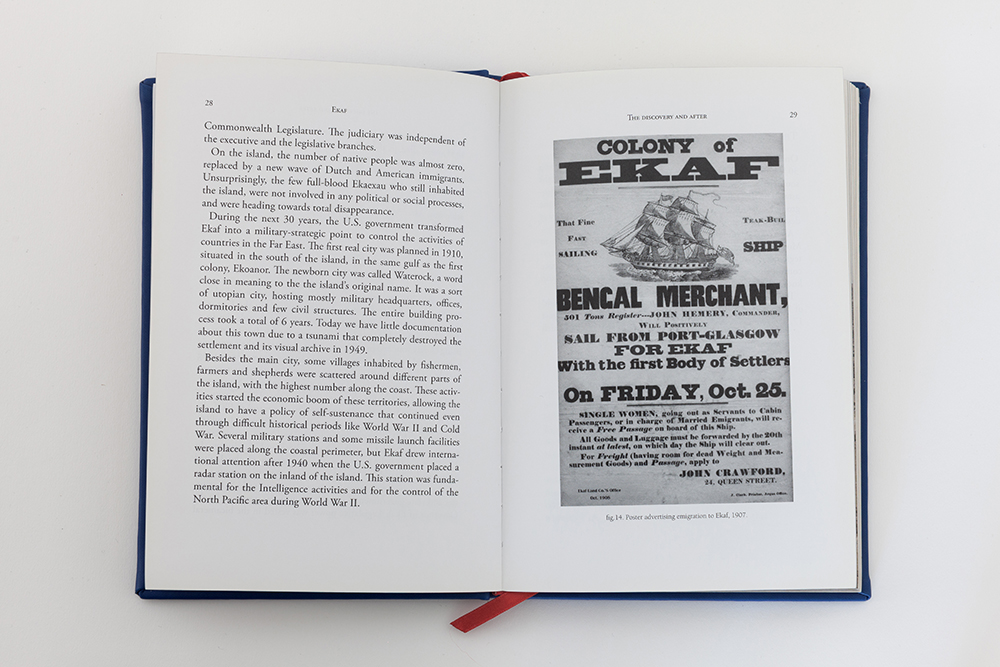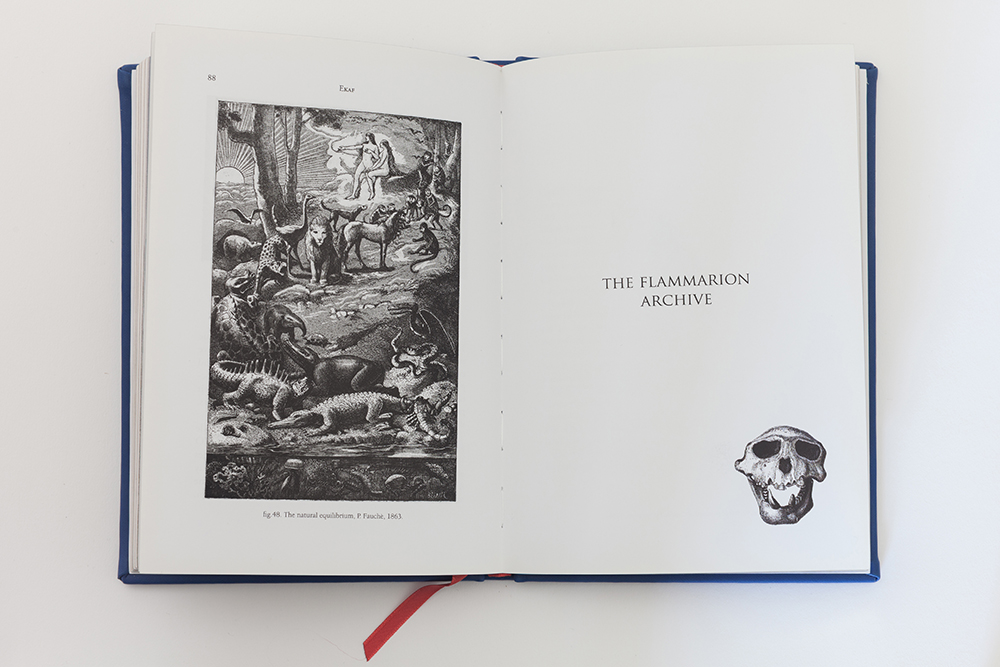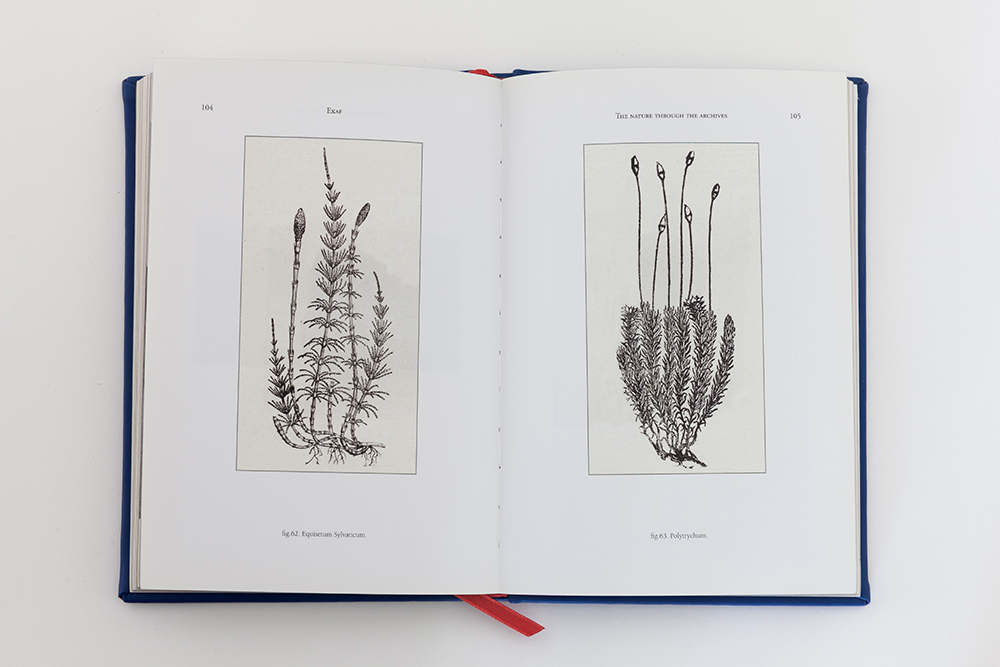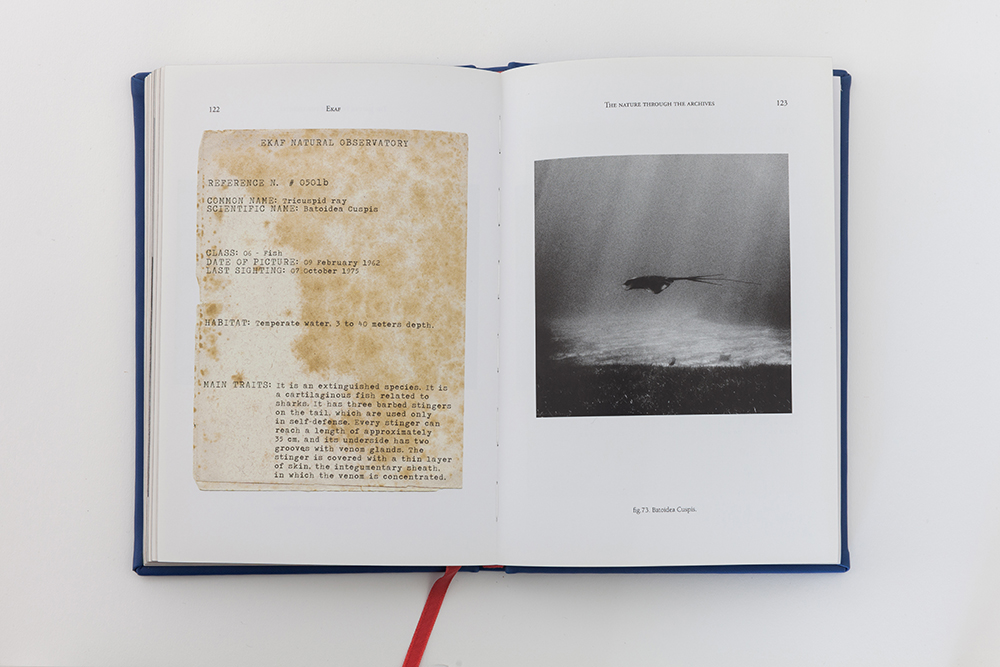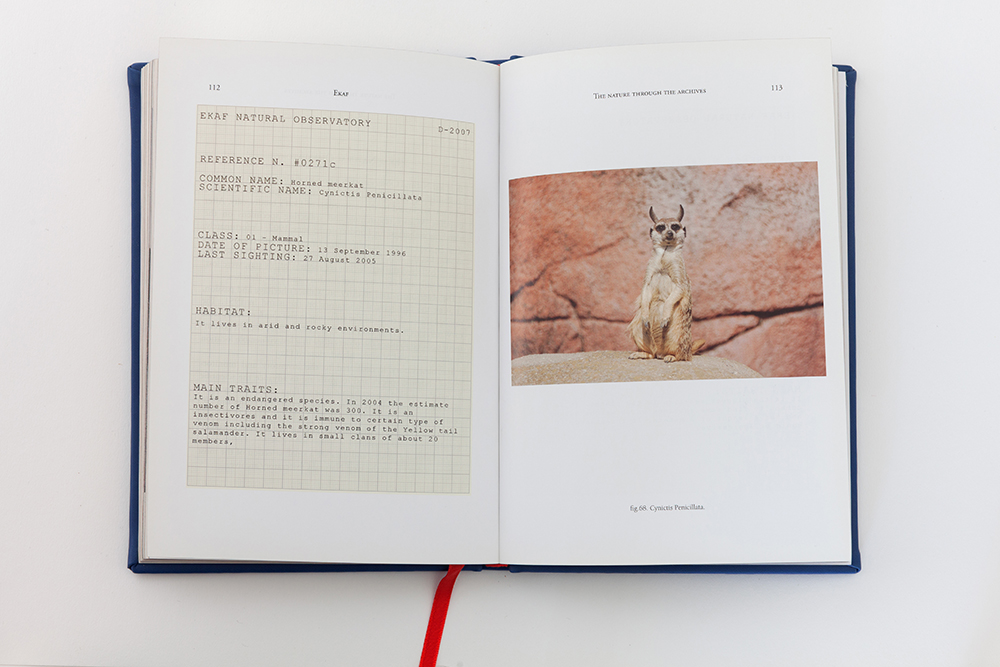Interview – Luca Spano: Ekaf
All spreads courtesy of Luca Spano
Ekaf, a comprehensive and heterogeneous work based on your early fascination to visit, as an explorer, a remote place that might or not exist. Along with your earlier work, Looking for the North, both have focused on the idea of the journey toward a place impossible to reach. What is it about that topic that interests you?
There are multiple reasons and they all gravitate together in the same galaxy. I can’t separate one from the other; I’m fascinated by the act of researching and exploring. It has so many ramifications with the creation of the truths on which we rely on. It talks about topics important to me such as the concept of representation, the colonial power and the construction of our cultural imaginary. But it is also infused of poetry. It narrates the tales of humankind: their efforts in searching for answers to unanswerable questions, endless journeys made of beliefs, will and death in order to reach the unknown. In a few words, the existential matter of human knowledge.
I like to think about “the image” in terms of an unreachable island. A piece of land that you can see on a map, but where you can never set foot on. A territory transformed in a symbolic representation. You set sail to reach this place, and during the journey you land on different shores, you navigate different seas, you make experience of our mediated world, but you never get to your final landing.
Our contemporary complexity is what makes it so interesting to me. In a way, the image is information, something created by somebody. If one century ago we had an explorer that went to a place, he would come back with his pockets full of untouchable truths (because nobody could verify them); in our interconnected era we are surrounded by reliable forms of information, we can question everything, but the problem is always the same: we can never reach the truth.
There is something about the unknown.
Ekaf suggests that culture and history might be constructed, and because our ideas of reality are entirely dependent on culture, reality is also constructed. However, your vision does not deny your personal emotion and unique viewpoint. What role does the imaginative aspect play in your work?
As I introduced earlier, I think reality is always a construction. The image of reality comes before reality itself. I can quote Jean Baudrillard and his concept of hypereality, or Gregory Batson where discussing “the map and the territory” he states that the retina itself creates the first representation of the world. Our experience is always filtered. Culture is based on this process of abstraction to the symbolic. Using Clifford Geertz simple words “man is an animal suspended in webs of significance he himself has spun”. This level of abstraction is a wonderful opaque playground where to let the imaginative process flourish.
I like to let my head go, getting lost in a childlike fascinating flow. This imaginative process intersects my personal background, emotions, but also disciplines on which we have historically relied such as cartography, ethnography and archaeology. I play with all of them, disassembling and reassembling information, creating open narratives which reinterpret the boundaries between evidence and fiction.
Yes, imagination is really important for me, I can’t live without it.
I would like to know more about your thinking process. How do your projects usually evolve? What kind of strategies do you put in place in order to translate your research visually and negotiate the gap between research and practice?
I don’t clearly know how to answer this question. Honestly research and practice come out with a strong synergy, which makes it difficult for me to identify a sort of evolution.
Certainly there are interests, which are always there, and then there is the ‘stay open aspect’. It means that I try to live in a very receptive mode, allowing myself to get fascinated by anything. At the core there is me and my recurring topics, then things such as the most banal object I see walking on a street, the texture of a rock or the words of an academic essay.
I collect these inputs in the form of images, materials, writings, feelings and thoughts. In my apartment I have boxes filled with cut-outs, rocks, pieces of wood, film negatives and so on. In the beginning you always think you have an idea, but then researching and production are going to make it fall apart. And that’s the best point when you get frustrated and fascinated at the same time. You see a different complexity coming up from your pieces, you see things working together, and you don’t know completely why. That gap is my unknown territory, the one where I love to dive in.
Making can be researching, and researching can be the making. It is similar to assembling a puzzle with no structure, with ever changing pieces. An unpredictable puzzle where there are always a couple of missing parts, and you keep looking for them, but what you get is just discovering new gaps.
Archival material plays an important role in a number of your projects. Do you think you have a particular way of seeing the world that’s related to archival photographs and material?
Yes I really do. I see the world through photography, or better through a photographic based mind setting. The archive is an important part of it. It plays a big role in my production, not only in terms of the material which it contains, but also in its conceptual aspect of being an institution. Archives create history, power, hierarchies. Archives are created, manipulated, hidden. Archives document our existence, and we use them to paradoxically justify it. A nation with no archive can’t exist.
We have a visual representation of an archive in our minds, perhaps a room full of wooden drawers with an endless number of items, organised in alphabetical order. While we are thinking about this image, we are looking for one picture inside our visual memory. Unconsciously we are opening one drawer among the millions in our head, therefore we are picking out an image from our personal archive. This similarity between our minds and our idea of archive, emphasises and illustrates the nature of a collection: something that is always created by something or somebody.
The archive is always an artifact. The one who creates the order is not an invisible character in this story. He is the author, and the author always has the power to decide what to include and what to leave out, driving the artifact towards a political and cultural interpretation. The archive is filtered, like everything else.
We know that a place exists only if it is on a map, and this colonial idea of knowledge bears the traditional idea of an archive: an event took place only if we can find information about it, even better if they are in an archive.
The archive is an example of how we preserve our experience, how we rigidly tend to categorise it. A series of rational and well organised information which help us interpret our surroundings. The imperfect shape of the archive, reveals how the culture is a system of signs that mutates continuously, and how we try to freeze this process creating a static museum-like knowledge.
But the archive is also a wonderful object, where we all try to find answers and evidence. It contains a form of poetic nostalgia for something that we don’t want to lose, almost like a living body; it moves, changes, possesses, has memories and it can forget these memories. Like an animal keeping track of its own personal obsessions. The archive impersonates our desire to track the past thinking about the future.
Do you have any current projects that you are working on that you would like to discuss?
I’m working on some defined and circumscribed projects. A photographic series based on images of artificial lakes I made in my native island Sardinia and I’m also finalising a new version of an artist book connected with the work Looking for the North.
Aside from that, I carry on my production. There is something shaping itself. It is related to the experience of materiality and image making, I like to think about it in terms of a cartography of emptiness. But I still don’t know what it is going to be, which makes me really exited. It is moving on the same path my production took in the last couple of years, so sculptures and images.
Last but not least I’m starting a collaboration with a group of researchers and scholars called JPEG (Jurassic Photographic Expert Group), which I think will be a very generative experience.

